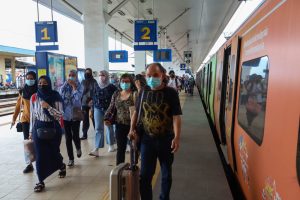Recent footage capturing crowded conditions in Beijing hospitals has raised global concern over a surge in respiratory infections in China. The Chinese health ministry, however, attributes this increase to flu and other common winter illnesses, not a novel virus.
This development occurs as the country navigates its first full winter since lifting stringent COVID-19 lockdowns. This has potentially led to increased cases of flu and other common winter illnesses.
Overwhelmed Healthcare System
Various reports and images circulating in local and social media depict overwhelmed health facilities. It is particularly striking to see an influx of sick children. Symptoms include lung inflammation and high fever, but most notably, no cough symptoms have been reported. This sudden increase in patient volume, especially in pediatric cases, has prompted scrutiny of China’s healthcare capacity and readiness to handle such spikes in illness.
Government and WHO Response
In light of these developments, the World Health Organization (WHO) has made a formal request for more detailed information from the Chinese government. In response, Chinese health officials have denied the presence of a new virus. They attributed the surge to known pathogens like influenza, respiratory syncytial virus (RSV), and mycoplasma pneumonia. However, this has not alleviated global concerns. The WHO’s public request for information is unusual. Such inquiries are typically conducted privately, indicating the seriousness with which this situation is being taken.
Measures to Combat the Surge
China’s health ministry, through spokesperson Mi Feng, has advocated for several measures to address this crisis. These include expanding fever clinics, promoting widespread vaccination among vulnerable populations like children and the elderly, and increasing the supply of medicines. Additionally, Feng advised the public to wear masks. He also urged local authorities to take preventive measures in crowded places such as schools and nursing homes.
Historical Parallels and Transparency Concerns
The current wave of respiratory infections in China is drawing comparisons to the initial outbreak of Covid-19 in Wuhan in December 2019. This similarity has led to calls for transparency and thorough reporting from both Chinese officials and the WHO. Scepticism remains among global health experts and the public. This is fueled by the perceived lack of transparency from China and WHO during the early stages of the pandemic.
WHO’s Involvement and Data Analysis
The WHO has reported receiving data from Chinese health officials during a teleconference. It shows an uptick in hospital admissions of children due to diseases including bacterial infection, RSV, influenza, and common cold viruses since October. Despite these reports, WHO officials have stated that the current peak in respiratory cases is not as high as the pre-COVID levels witnessed in 2018-2019. This data suggests that while there is an increase in respiratory infections, it may not be indicative of a novel pathogen.
International Perspective on Respiratory Infections
The increase in respiratory illnesses following the lifting of Covid-19 restrictions is not unique to China. Other countries have experienced similar trends. This is often attributed to a dip in immunity among the population due to extended periods of social distancing and isolation during the pandemic. Experts have noted that these patterns align with the typical resurgence of common respiratory pathogens once public health measures are relaxed.
Conclusion
As the situation unfolds, the global health community remains vigilant. The emphasis in China is currently on enhancing healthcare access and capacity, ramping up vaccination efforts, and reinforcing public health measures to manage the seasonal rise in respiratory illnesses. The WHO’s involvement underlines the need for continuous monitoring and transparent reporting to assess and address public health concerns effectively.














